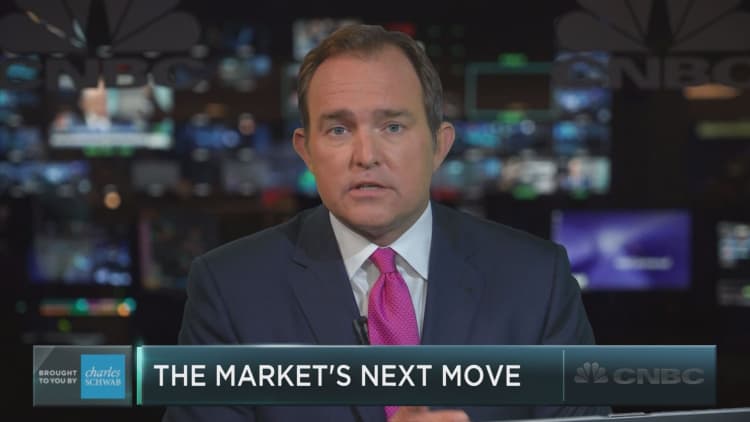
Major U.S. averages were barely positive in Monday trading after two straight weeks of losses for the , and some strategists say under-the-surface fissures in the market are becoming increasingly apparent.
Part of the problem lies in the basic difficulty that the market is "priced to perfection" in terms of valuations, said Gina Sanchez, CEO of Chantico Global. Much of the market's recent movement lower, as volatility has ramped up modestly and the S&P just logged a rare 1 percent move lower in a single session last week, represents investors "just reconciling that."
"You throw into that mix a dysfunctional government and the kind of political drama that we continue to see, and I really think that begins to unravel quickly," Sanchez said Friday on CNBC's "Trading Nation."
Adding to what Sanchez referred to as "cracks showing in the stock market's foundation" are signs of slowing economic growth. Some revisions for growth and consumption, as well as earnings estimates revisions, are beginning to slow, she pointed out.
For example, this year's 20 percent earnings per share growth initial estimate has been revised down to about 11 percent; "that's a big difference in terms of what we're expecting."
Some sectors and industry groups are showing signs of weakness as they "break down" on a more granular level, according to Matt Maley, equity strategist at Miller Tabak. The market has indeed been trading in quite a narrow range, and some weakness in technology stocks has already been apparent this summer, but now some weakness is showing in bank stocks, too.
For instance, in the SPDR S&P Bank ETF (KBE) a mere four stocks are outperforming the S&P 500, Maley pointed out, and over half of the stocks in the group are down on a year-to-date basis. Additionally, the Russell 2000 dipped below its 200-day moving average earlier this month for the first time in a little more than a year, which Maley considers a "warning sign" of market softness. When the S&P 500 dropped substantially in mid-2015, the Russell 2000 began declining about a month before the rest of the market, Maley pointed out Friday on "Trading Nation."
It became clear earlier this month that the market was pricing in hopes for tax reform, he said, and "any chance that that isn't going to come, or come in a comprehensive way, is going to be negative for the stock market."
"The further we move into the year, and the further we don't get anything on this, the more damaging that's going to be," Maley said.
At this juncture, the S&P 500 is more than one standard deviation below its 50-day moving average for the first time since just before the U.S. presidential election in November, a typical indicator of "oversold" conditions, Raymond James market strategist Andrew Adams wrote to clients Monday morning. Support for the index likely exists just above the 2,400 mark, Adams wrote, "so the buy-the-dip crowd may make an early week attempt to boost the market back up."
"Nevertheless, practically all of the market breadth indicators we follow are still pointed down and not yet at 'washout' levels that have historically marked bottoms, indicating selling pressure may not have been exhausted quite yet," he added.
After falling to a six-week low of 2,417.35 in early trade, the S&P staged a comeback and was up modestly midafternoon Monday.





